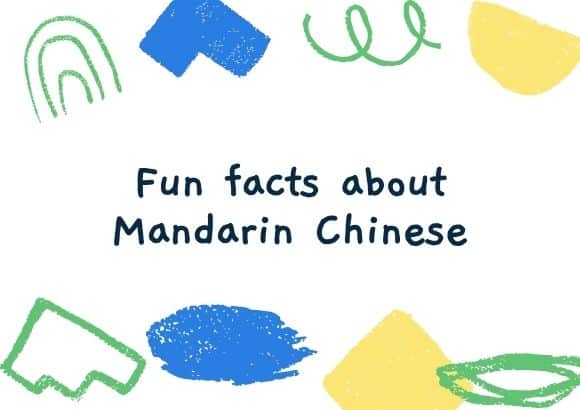Every year on April 20th, the United Nations observes World Chinese Language Day. According to the UN, the goal of this celebration is “to promote equal usage of all six official languages within the Organization while also celebrating multilingualism and cultural diversity.” Let’s discover some interesting facts about the Mandarin Chinese language on this World Chinese Language Day!
1. On November 12, 2010, the inaugural Chinese Language Day was celebrated.
In 2011, the time was changed to April 20. This is due to the fact that April 20 honours the illustrious Chinese historian Cangjie and correlates with the “Rain of Millet” (Guyu) in the Chinese calendar. The Chinese characters are credited to Cangjie, and it is said that when he did so, “the deities and ghosts wailed and the heavens poured grain.” A grain crop called millet is consumed by people as nourishment.
2. Chinese writing dates back more than 3,000 years.
Over 3000 years ago, during the Shang Dynasty (c. 1600–1046 BC), China first recorded its history in writing. Chinese characters carved into “oracle bones” are the oldest Chinese characters that have been found. These bones, which were utilized for divination, were typically discovered on animal bones and turtle shells.
3. There are over 50,000 characters in Chinese writing.
The average Chinese dictionary has about 50,000 characters. However, up to 20,000 characters are listed as being in use in recent dictionaries. You need to know at least 8,000 Chinese characters in order to speak the language with ease and be an educated native Chinese. However, knowing between 2000 and 3000 words will be enough to read a newspaper.
4. About 1 billion individuals worldwide speak Mandarin Chinese.
1.3 billion people speak Chinese as their first language, and 917 million of those people speak Mandarin. As a result, it is among the most widely spoken languages worldwide. After this, you might want to enroll in a Mandarin class if you want to study a language that one in six people around the globe speaks.
5. China, Taiwan, Singapore, and Malaysia are the main countries that speak Mandarin Chinese.
Mandarin is a language that is spoken outside of China in places like Taiwan, Singapore, and Malaysia. When the majority of hiring managers are looking for applicants who speak Mandarin to fill jobs in their companies, the ability to speak Mandarin becomes, up to a point, a contentious issue. That is how important this language can be for one’s professional career!
6. There is no alphabet in Mandarin Chinese.
There is no such thing as a Chinese alphabet, although the English language has 26 letters and the Cyrillic alphabet of Russia has 33. The only units of the Chinese language are characters, which are combined to form words. It is important to note that Chinese has extremely basic grammar. The language is gender neutral and neither singular nor plural are used.
7. Chinese characters come in two different varieties.
One is conventional, while the other is condensed. Communities in Taiwan, Macau, Hong Kong, and overseas Chinese employ traditional characters that need more strokes and take longer to write. China, meanwhile, employs streamlined characters.
8. The four tones of Mandarin Chinese.
One of the most challenging parts of studying Mandarin Chinese can be mastering the four Chinese tones. Why are there four different tones? It implies that there will be four distinct meanings for each word or syllable. For example, the term “ma” can be used to refer to a horse, a mother, hemp, or to reprimand. You should therefore use these tones with extreme caution.
9. The Portuguese gave us the word Mandarin.
The Portuguese word “mandarium” was created by using the Sanskrit word “mantra”. Mantra refers to a “counselor,” a supporter and advisor to the leader. In 1589, the English language formally acquired the Portuguese word “mandarium,” changing it to “mandarin.” Then, during that time, this phrase was used to describe Chinese officials.
10. In 1946, Chinese was recognized as a UN official language.
Did you know that the United Nations has six official languages? Arabic, English, French, Russian, Spanish, and Chinese are among them. However, the General Assembly only employed Chinese as a working language in 1973, while the UN Security Council only used it in 1974.
Interested to learn Mandarin? Get a flexible schedule with private lessons all customized to your learning needs. Get connected with top Mandarin tutors here today.
Lihat kami di www.tigercampus.com.my
Daftar untuk uji coba gratis hari ini!: https://www.tigercampus.com.my/free-trial/
Hubungi kami via WhatsApp untuk pertanyaan segera: +6016-247 3404 https://wa.link/avrou0








